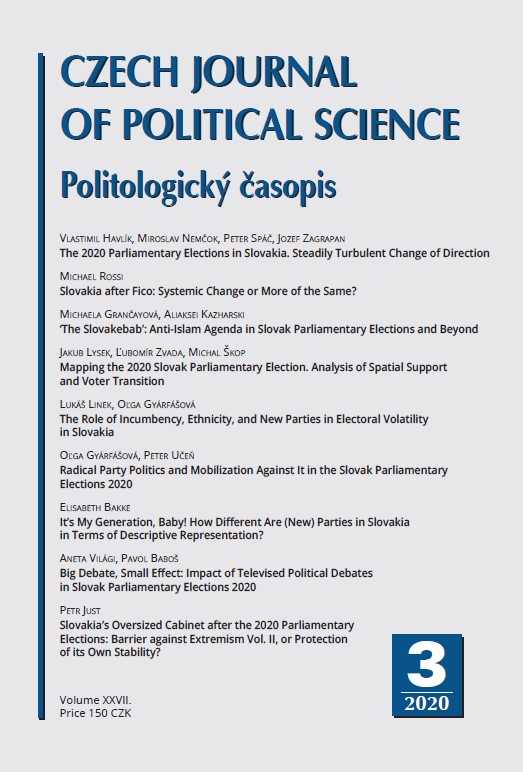It’s My Generation, Baby! How Different Are (New) Parties in Slovakia in Terms of Descriptive Representation?
It’s My Generation, Baby! How Different Are (New) Parties in Slovakia in Terms of Descriptive Representation?
Author(s): Elisabeth BakkeSubject(s): Politics / Political Sciences, Social Sciences
Published by: Masarykova univerzita nakladatelství
Keywords: Slovakia; parliamentary elites; representation; new parties; Igor Matovič
Summary/Abstract: Party systems all over Europe are becoming more unstable, as new parties win representation. Many of these parties have few members and little or no presence ‘on the ground’ and they tend to present themselves as an alternative to the old, corrupt, and/or incompetent elites. But are they really? In this article I investigate how the parliamentary elites of new parties differ from the elites of more established parties, using the 2020 election as a point of departure. Slovakia is a particularly interesting case, because since 1992, at least one new party has entered parliament in every election bar one. I find that new and/or populist parties are not necessarily much more representative, but most of them do represent an alternative to the established elite in some respect. Strikingly, genuinely new parties not only have younger legislators, but also literally represent a new generation: the generation of the party leader. However, as new parties grow older, so do their parliamentary elites. In leadership-dominated parties the composition of the party leader’s inner circle clearly matters for candidate selection and hence, for the social bias of the parliamentary elite. Finally, the idiosyncratic nomination practice of OĽaNO, the new prime minister’s party, is part of the reason for the party’s relative social pluralism, as well as for high turnover, ideological diversity and low party loyalty.
Journal: Politologický časopis - Czech Journal of Political Science
- Issue Year: XXVII/2020
- Issue No: 3
- Page Range: 353-371
- Page Count: 18
- Language: English

